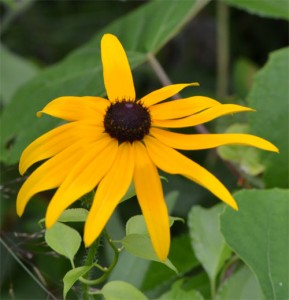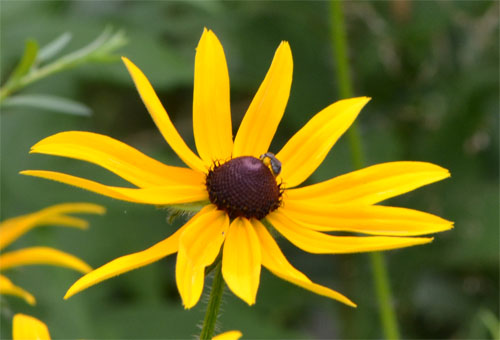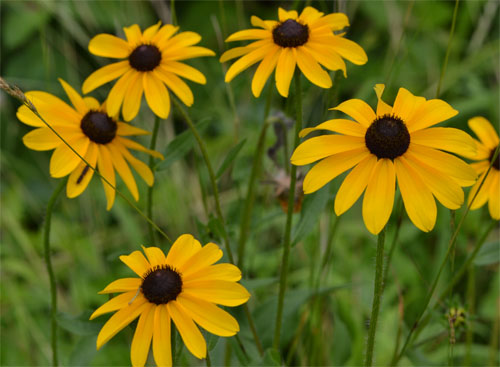 This plant is spectacular when it is doing well. I’ve had mixed results. None of the plants survived from last summer. True – they can be annual or biennal plants, but in some cases or situations they are perennial. I think the drought did them in last year. This year, I had some good strong plants going, until the rabbits discovered them. I believe Rudbeckia hirta is deer resistant, but the bunnies eat leaves as well as flowers – they have the annoying habit of gnawing the stems halfway so the flowers topple to the soil, making for easier consumption, no doubt… I have a few in a flowerbed closer to the house that have remained intact. Blackeyed susan is a must-have though, despite the rabbit problems and the fact that I get contact dermatitis from this plant. It attracts scores of bees and butterflies.
This plant is spectacular when it is doing well. I’ve had mixed results. None of the plants survived from last summer. True – they can be annual or biennal plants, but in some cases or situations they are perennial. I think the drought did them in last year. This year, I had some good strong plants going, until the rabbits discovered them. I believe Rudbeckia hirta is deer resistant, but the bunnies eat leaves as well as flowers – they have the annoying habit of gnawing the stems halfway so the flowers topple to the soil, making for easier consumption, no doubt… I have a few in a flowerbed closer to the house that have remained intact. Blackeyed susan is a must-have though, despite the rabbit problems and the fact that I get contact dermatitis from this plant. It attracts scores of bees and butterflies.

Some interesting facts: Rudbeckia is named after Olaus Rudbeck the younger (1660 – 1740) who was Linneaus’ botany teacher at the Swedish university of Uppsala. Hirta means “hairy” in Latin.
Early settlers used the plant as a stimulant and a diuretic. They brewed a tea from the dried leaves to use as a stimulant for the kidneys. Native Americans also made a tea from the root to relieve colds.
Medicinal Uses: An infusion of the roots has been used in the treatment of colds, and worms in children. A warm infusion of the root has been used as a wash on sores and snake bites. The ooze from the roots has been used as drops to treat earaches.
Some folks (count me in) are sensitive to the plant and can get contact dermatitis or rashes.

blackeyed susan July 8 2011 Barnstable
Leave a Reply